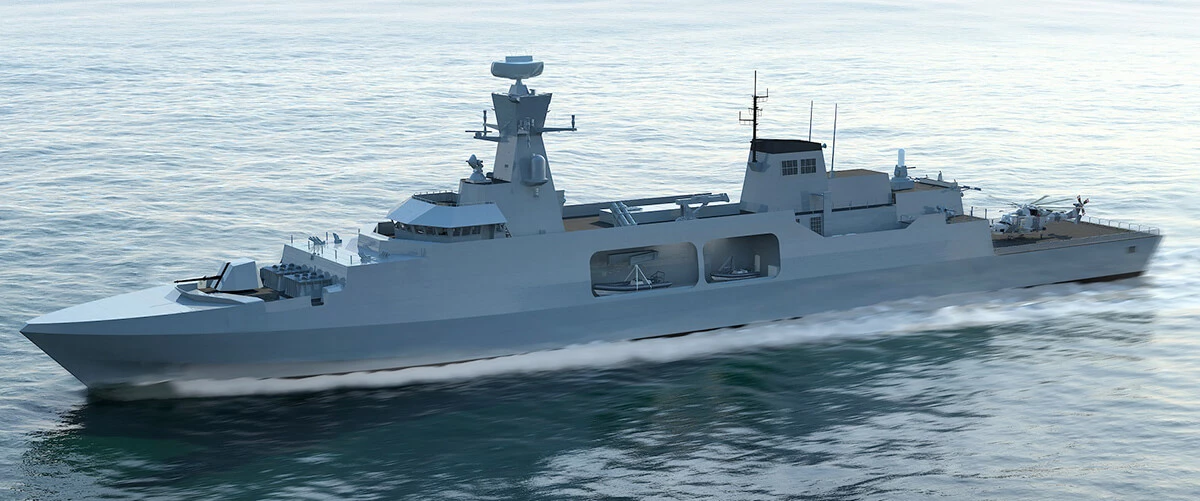The Type 31e frigate and the international marketplace
Back in July, the UK government’s decision to pause the procurement process for the Type 31e (T31e) frigate highlights the challenge of delivering a ship to fixed cost and time aspirations.
Add bookmark
Setting a new course for the Type 31e frigate
Back in July, the UK government’s decision to pause the procurement process for the Type 31e (T31e) frigate highlights the challenge of delivering a ship to fixed cost and time aspirations. Marrying the aims of the Ministry of Defence (MOD) and industry in a way that balances risk and reward is proving difficult.
The MOD wants the project to be delivered on time and to a budget of £250 million per ship. While the industry wants to get a good return on investment. So, how can we deliver the ships the UK needs while making an attractive business proposition for the industry?
T31e – a pathfinder of the National Shipbuilding Strategy
The 2017 National Shipbuilding Strategy called for a change to naval procurement and production. While the UK has modest success exporting Offshore Patrol Vessels, it doesn’t seem a fair reflection of the UK’s maritime capability, technology and reputation.
To address this issue, the strategy focuses on exportability; the T31e must be the pathfinder for renewed UK naval platform exports.
RELATED: Offshore Patrol Vessels Global Market Report 2018-2019
The UK has recently realised its potential where the market needs advanced technology – the Royal Australian Navy bought the Type 26 Global Combat Ship design, for example. But the T31e programme has taken a different approach, fixing a low price (£1.25bn for five ships delivered by 2023) and delivery timescale, challenging the industry to meet the Royal Navy’s requirement.
There are three core components to any ship procurement programme; the design, supply chain and whole ship. Each of these is also key elements of the T31e export offer. Different potential customers are looking for different combinations of these core elements, with the current market trend moving towards licencing designs that can be built in the buyer’s country, with a varying degree of supply chain involvement. This suggests the greatest export opportunities lie in the design and supply chain areas, rather than whole platforms.
Collaboration gets results when there’s confidence in it
The Typhoon fighter jet shows collaboration between government and industry can spur exports. BAE Systems, the UK RAF and government continue to export the jet to Middle Eastern partners, and the same collaborative export approach is achievable in the maritime sector. If the government shows support for exporting T31e, companies bidding to make the ship are more likely to offer a better deal as their investment appraisal will be much more positive.
RELATED: Surface Warships Market Report 2018
We also see successful collaboration between industry and government outside the military. Most major exporters of commercial airliners have had the backing of their national government in the international marketplace. For example, this has helped Bombardier generate orders in advance, spreading development costs among more buyers.
Taking lessons from the aerospace model and committing government support up front can help maximise the exportability of the T31e programme.
Consider the export potential, even in the domestic programme
Having given a fixed budget and timeline for T31e, the UK will look to industry to define and deliver a technical requirement that meets the ship’s intended role in the Royal Navy. But the industry also needs to consider the export market and find the ‘sweet spot’ that maximises the potential of T31e.
With a complete view of the export market requirements for the T31e, there can be trade-offs between the Royal Navy’s needs and the export potential. There will be a temptation to lean towards the UK requirements, but doing this could make T31e an unattractive prospect in the export market.
One way to maximise both markets is to take a modular approach to designing the T31e – making it possible for different buyers to choose different capabilities. It would also make it easier to maintain, manage and upgrade technology.
However, modularity will only work if it’s aligned with the needs of different potential export customers. This means the core design must be defined with a detailed understanding of the international market.
Create lasting value through forward-looking, customer-focused thinking
As revered as it is, relying on the Royal Navy’s brand to sell the T31e is unlikely to be enough to maximise export potential. Instead, the UK must think like a potential customer to make the ship more attractive. One way to achieve this is to provide different ownership and service models.
But for service models to work, there needs to be access to data such as the ship’s status, system health, stock levels, failure rates and the efficiency of local maintenance.
The F35 Lightning II is an example of data-led service delivery. It has on-aircraft prognostics and health monitoring systems, and a ground-based Autonomic Logistics Information System to better forecast maintenance requirements. This means the supplier knows where its planes are, the number of flight hours registered and much more. And the supplier can intelligently prioritise international partners.
RELATED: The U.S. halts delivery of F-35 fighter jets to Turkey
Considering that through-life maintenance costs for warships will likely exceed the up-front purchase price, support packages that promise more asset availability for less money can be compelling. Understanding the export market’s appetite to share data and risk in pursuit of more value for money will be key to identifying the most compelling ownership and service model.
Putting all potential customers at the heart of the offering and exploiting new technologies will help the T31e see long-lasting, global export success.
Paul Finley is a defence and security expert at PA Consulting and Adam Meadus is a defence procurement expert at PA Consulting. For more information, visit www.paconsulting.com
SEE MORE: Saudi Naval Expansion Programme II: Modernising the Royal Saudi Navy





















